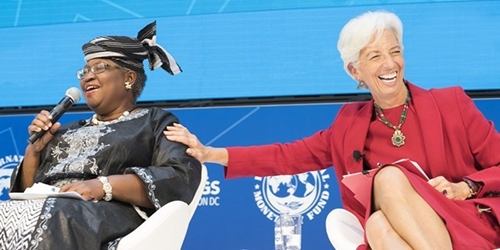The report provides the latest rankings and regional distribution of countries with women in executive and parliamentary positions as of January 1. The results show that the number of women in political leadership roles has increased overall. However, the presence of women in high-level leadership positions in government or as heads of state and government remains very limited.
    |
 |
|
WTO Director-General Ngozi Okonjo-Iweala (left) and President of European Central Bank Christine Lagarde (Photo: Twitter) |
As of the beginning of this year, 11.3% of the countries worldwide had women as heads of state (excluding countries with monarchy), and 9.8% recorded women as heads of government. These both numbers increased compared to a decade ago when they were at 5.3% and 7.3%, respectively.
The report pointed out that only 13 countries, mostly in Europe, had gender-equal cabinets, with 50% or more of women cabinet members as heads of ministries and above. Meanwhile, there were still nine countries that had no women cabinet members heading ministries.
According to the report, men continued to dominate in policy areas such as economic, defense, justice, and home affairs portfolios. Women only comprise 12% of the cabinet ministers leading defence and local government portfolios, 11% of energy, natural resource fuels, and mining portfolios, and 8% of transport portfolios.
"We’re seeing ongoing progress in the number of women in politics this year, which is encouraging. However, we still have a long way to go to reach gender equality when we see the current rates of growth,” said IPU Secretary-General Martin Chungong.
Source: VNA